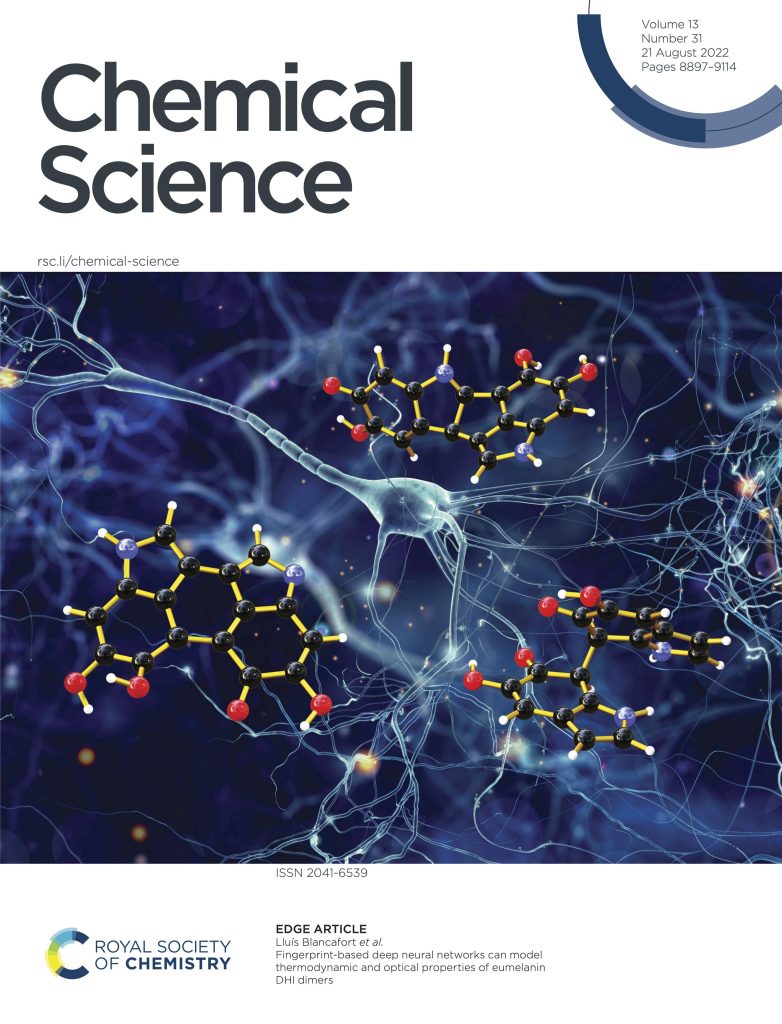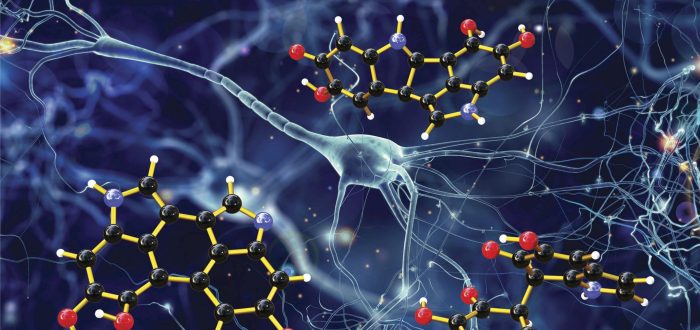Recently, Daniel Bosch, Jun Wang and Lluís Blancafort reported in Chemical Science on “Fingerprint-based deep neural networks can model thermodynamic and optical properties of eumelanin DHI dimers”. Eumelanin is the biopolymer responsible for photoprotection in living beings and holds great promise as a smart biomaterial, but its detailed structure has not been characterized experimentally. Theoretical models are urgently needed to improve our knowledge of eumelanin’s function and exploit its properties, but the enormous amount of possible oligomer components has made modelling not possible until now. Here we show that the stability and lowest vertical optical absorption of 5,6-dihydroxyindole (DHI) eumelanin dimer components can be modeled with deep neural networks, using fingerprint-like molecular representations as input. In spite of the modest data set size, average errors of only 6 and 9% for stability and S1 absorption energy are obtained. Our fingerprints code the connectivity and oxidation patterns of the dimers in a straightforward, unambiguous way and can be extended to larger oligomers. This proof-of-principle work shows that machine learning can be applied to help solve the structural challenge of melanin.
The paper was accompanied by the Front Cover:

D. Bosch, J. Wang and L. Blancafort
“Fingerprint-based deep neural networks can model thermodynamic and optical properties of eumelanin DHI dimers”
Chem. Sci. 2022, 13, 8942-8946
DOI: 10.1039/D2SC02461F
Girona, August 23, 2022
For more info: gestor.iqcc@gmail.com

